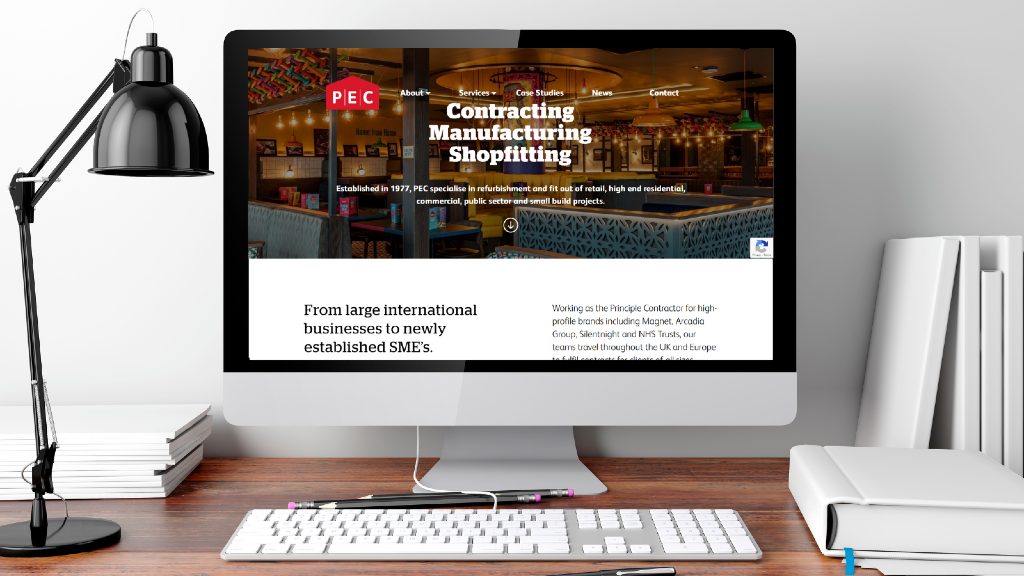Are you looking to build a website for your construction company or give your current one a refresh? These five tips will help you achieve this.
Your website is central to building your brand – it’s like the sun in your marketing SOLAR system. Its main function should be to convert visitors into enquiries by creating the perfect user experience.
In this blog, we’re going to discuss what to consider when building a website for your construction company.
If you run a construction company and are looking to build a new website from scratch or give your existing site a re-vamp, this blog’s for you.
1. Make it visual
The outcome from anything produced in the construction sector is very visual. Using images is a great way of showcasing projects that will help to increase your credibility and attract clients to work with you.
With years of experience working with companies in the construction sector, we often find that professional photography of the finished product is low on the agenda, which is a real shame. All that hard work goes into finishing a project, but it isn’t visually captured to use as part of a company’s portfolio. We do come across some companies that take pictures with smartphones. Smartphone pictures can be done really well, but if you’re not familiar with getting the best from your smartphone, they don’t always come out great.
Factoring in a budget for professional photography is something we would recommend. The impact of professional photography can be the difference between a website user turning into an enquiry, or not.
2. Be careful with before and after shots
Before and after images can be used to highlight the process of getting to the end result on a project. However, before and after shots on a website don’t professionally show the end result that people are after. Instead, it often places an emphasis on the messy part in between.
If you want to use before and after shots, maybe use them in blogs while talking about a specific project or process you went through, rather than placing them in case studies.
Your website user wants to know what the end result is going to be for them. An example we always like to use is buying a car. When you buy a brand new car, you view it in a well-presented showroom and see it in all its shiny glory while taking in that new car smell. You don’t see it on the production line because you just want to know that it looks good and drives well. If you think about this in relation to your construction website, your users want to see the shiny car, not the production line.
A great place for before and after shots is social media. You can use social media to tell the story of how the project developed and use your website to showcase the end result.
3. Consider your audience when writing content
When you’re planning the content for your website, always keep your audience in mind. This means understanding the type of language they will respond to.
For example, if you specialise in shopfitting for the fashion retail sector, some of the language used might be different compared to a company that specialises NHS installations. It’s likely that the content that the procurement manager for the fashion retail business will respond to will be different to the content that the procurement officer for the NHS will respond to.
Creating an audience persona for each type of broadly categorised audience that will be visiting your website can help you understand the type of language they will respond to.
4. When to highlight your accreditations
Accreditations are obviously very important within the construction sector. However, that doesn’t mean it needs to be the first thing seen on the page.
We find that it’s common for business owners within the construction industry to want their accreditations to take a prominent spot on the home page. Having an understanding of your audience will help you understand whether this is the information they want to see first.
Your audience is likely to be interested in this information, but it may be better placed within the footer or on the home page further down. The key thing you want to show them on your website, is how you can add value to their business. Accreditations add credibility to your offering. It’s often your process that is the key value-adding element of businesses in construction.
5. Consider your calls to action (CTA’s)
CTA’s are important for the user flow of your website. These should be designed with your audience in mind. Consider what the user will be most interested in first. For example, if you think it’s case studies, make that the most prominent CTA on your homepage.
Even if you’re unsure which page they will want to travel to first, don’t give the user too many things to do at once. Try using one CTA at a time where possible.
Also, make sure it’s easy for the user to get in touch. Consider using ‘contact us’ CTAs on case study and services pages so they can contact you with ease if they like what they see. This will help to improve the user flow for your construction website.
Here is an example of a shopfitting website we built for a client.

If you would like to see more information on this project, see the full case study here.
Your website is the visual shop front of your construction business, and helping you get the best from it is what we do best. If you’ve got a question or project in mind, we’re more than happy to have a chat about how we can help you move forward with it.

